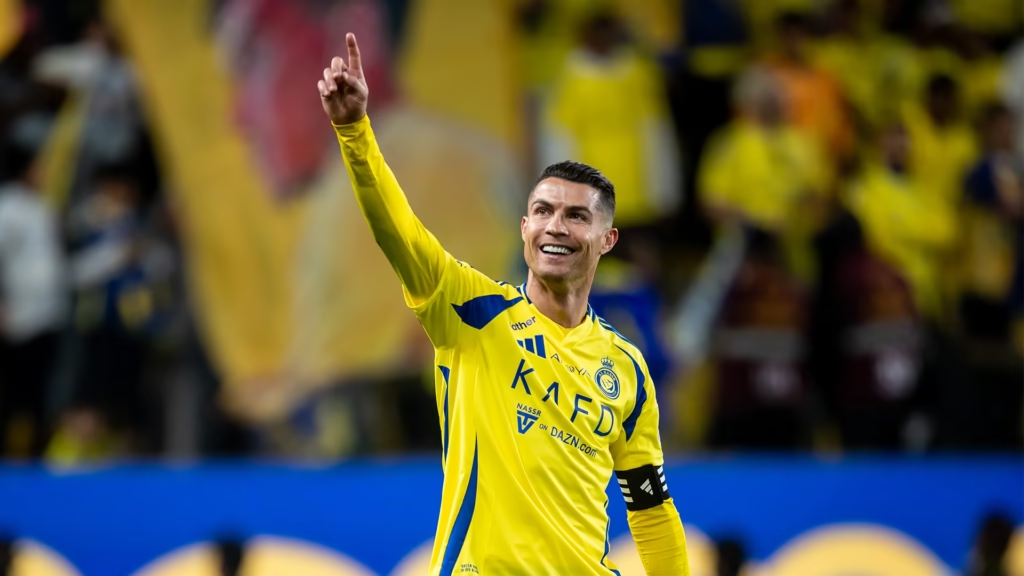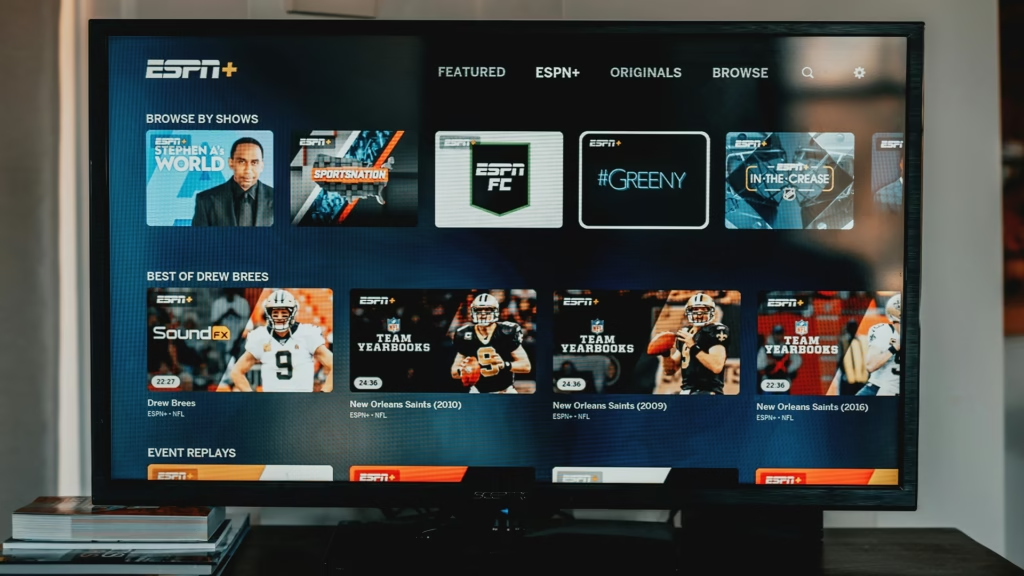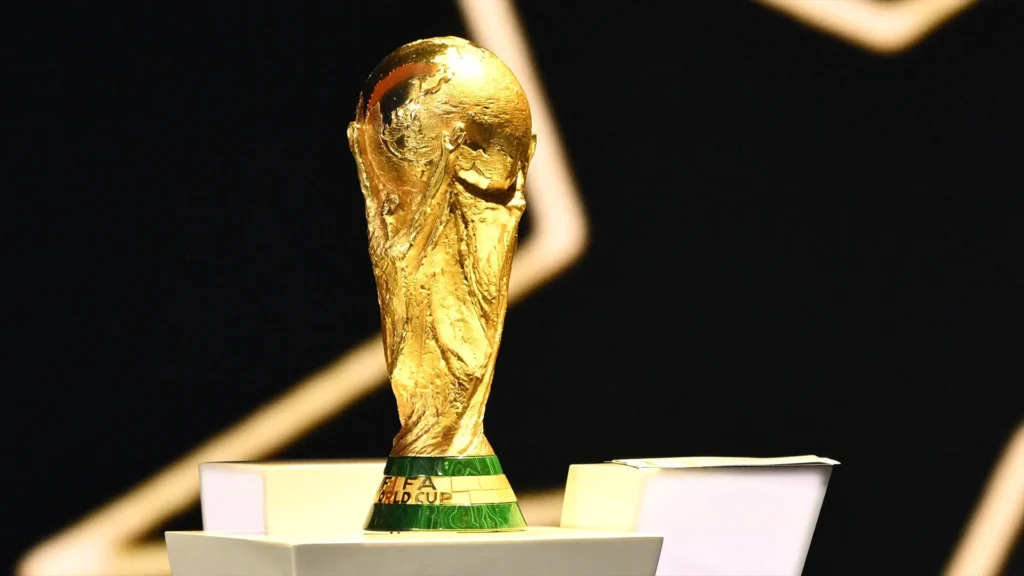In January 2023, Cristiano Ronaldo shocked the football world by joining Al-Nassr for $213 million per year. Six months later, Neymar followed for $100 million annually, Karim Benzema signed for $50 million per year, and N’Golo Kante took home $25 million annually. By the end of 2023, Saudi Pro League clubs had spent $957 million in a single transfer window, second only to the English Premier League.
Fast forward to September 2025, and the picture looks dramatically different. Neymar fled back to Brazil in January after playing just 7 matches in 18 months. Steven Gerrard was fired from Al-Ettifaq. Average attendance sits at 7,885 fans per match. The league operates at massive losses with no profitability in sight.
Yet Saudi Arabia keeps writing hundreds of millions in checks. Over $1.86 billion has been spent on foreign players since 2023, and in 2025, Al-Nassr dropped $77 million on 21-year-old Jhon Duran.
Why would a league losing hundreds of millions per year keep buying aging superstars who can barely stay healthy? Because this isn’t about football. It’s about Vision 2030, a $950 billion sovereign wealth fund, and transforming Saudi Arabia’s global image, one overpriced transfer at a time.
The $957 Million Summer That Changed Everything
When Saudi Arabia Outspent Everyone Except the Premier League
Summer 2023 was Saudi Pro League’s “shock and awe” moment. The Public Investment Fund (PIF) took control of four clubs- Al-Nassr, Al-Hilal, Al-Ittihad, and Al-Ahli, and immediately opened the checkbook.
The 2023 spending spree:
- $957 million total spending (2023 summer window)
- $907 million net spend Second only to Premier League’s
- $1.39 billion net spend Outspent La Liga, Serie A, Bundesliga, and Ligue 1 combined
- 94 foreign players signed in one window
The marquee signings:
- Cristiano Ronaldo: $213 million per year (Al-Nassr)
- Neymar: $90 million transfer fee + $100 million/year salary
- Karim Benzema: Al-Ittihad → $50 million/year (reigning Ballon d’Or winner)
- N’Golo Kante: Al-Ittihad → $25 million/year (free transfer from Chelsea)
- Riyad Mahrez → Al-Ahli → $52 million transfer + $47 million/year salary
- Ruben Neves → Al-Hilal → $55 million
- Malcolm → Al-Hilal → $60 million
- Aleksandar Mitrovic → Al-Hilal → $46 million + $25 million/year
Cristiano Ronaldo, who arrived in January 2023 for $213 million annually, was no longer an outlier. He was the trendsetter.
The message was clear: Saudi Arabia wanted to become a global football destination overnight.
What Is Vision 2030? (And Why Football Matters)
The $950 Billion Plan to Transform Saudi Arabia
Vision 2030 isn’t a football project. It’s a national transformation strategy backed by the Public Investment Fund (PIF), Saudi Arabia’s sovereign wealth fund worth $950 billion.
The goals:
- Reduce dependence on oil revenue (currently 50% of GDP)
- Diversify the economy into tourism, entertainment, and sports
- Transform Saudi Arabia’s global image
- Create 1.5 million jobs by 2030
- Increase non-oil GDP contribution from 16% to 50%
The sports budget:
- $2 billion annually allocated for sports investments (2023-2030)
- LIV Golf → $3 billion invested
- Formula 1 → Saudi Arabian Grand Prix secured
- Boxing → Anthony Joshua fights, Tyson Fury negotiations
- Tennis → WTA Finals moved to Riyadh
- WWE → Multi-year partnership deal
Football is just one piece of this larger puzzle. But it’s the most visible.
Crown Prince Mohammed bin Salman’s strategy: Use sports as a “soft power” tool to rebrand Saudi Arabia from “the oil country with human rights issues” to “the global entertainment and sports destination.”
Whether you call it “sportswashing” or “strategic diversification,” the numbers don’t lie: Saudi Arabia is spending billions to change the conversation.
The Reality Check: Empty Stadiums and Massive Losses
What $3 Billion Bought Saudi Arabia (So Far)
Two years in, the Saudi Pro League has attracted global superstars, but not global fans.
Attendance numbers (2024-25 season):
- Average attendance: 7,885 fans per match
- Stadium capacity average: 25,000+
- Average capacity filled: 31.5%
- Al-Nassr (Ronaldo’s team) average: 20,000
- Al-Ittihad average: 34,500 (highest in league)
- Highest single match: 58,755 (Al-Ittihad vs Al-Hilal)
For context:
- English Premier League average: 39,000+ per match
- La Liga average: 28,000+ per match
- Bundesliga average: 39,000+ per match
- Even MLS averages 22,000+ per match
Financial reality:
- Saudi Pro League clubs operate at significant losses
- No club is profitable
- PIF subsidizes 100% of foreign player wages
- Television rights deals remain minimal (most matches aired on free state TV)
- Sponsorship revenue remains far below European leagues
Global viewership: Despite Ronaldo, Neymar, and Benzema, international TV ratings remain negligible. The league has failed to secure major broadcast deals in Europe, the U.S., or Latin America.
The product on the field? Mixed at best.
2025 Reality: Neymar’s Disaster and the Strategic Pivot
When the $90 Million Investment Played 7 Matches in 18 Months
If there’s one signing that symbolizes both the ambition and the risk of Saudi Pro League spending, it’s Neymar.
The Neymar disaster:
- Transfer fee: $90 million
- Annual salary: $100 million (Capology)
- Total cost: $300 million (transfer + wages over 2 years)
- Matches played: 7 (across 18 months)
- Minutes played: 428 minutes
- Goals: 1
- Cost per match: $42.8 million
- Cost per minute: $700,000+
What happened:
- Torn ACL in October 2023 (on Brazil national team duty)
- Missed entire 2023-24 season
- Returned in October 2024, played 2 matches
- Another injury in November 2024
- Contract terminated in January 2025 by mutual agreement
- Returned to Brazil (Santos)
Neymar collected nearly $200 million while contributing almost nothing. Al-Hilal won the league anyway, but the signing was an unmitigated disaster.
Other 2024-25 struggles:
- Steven Gerrard fired from Al-Ettifaq after poor results
- Jordan Henderson left Al-Ettifaq after one season (returned to Europe via Ajax)
- Karim Benzema underperformed in 2023-24, earning nickname “Ben-Hazima” (son of defeat)
- Multiple European stars rumored to want exits
The 2025 pivot: Saudi Pro League clubs shifted strategy:
- Fewer aging superstars
- More investment in younger talent
- Focus on players in their prime (ages 24-29)
Key 2025 signings:
- Jhon Duran (21 years old) → Al-Nassr → $77 million
- Moussa Diaby (25 years old) → Al-Ittihad → $52 million
- Ivan Toney (28 years old) → Al-Ahli → $42 million
The message: We’re still spending, but we’re getting smarter.
By the Numbers: The Full $3 Billion Breakdown
Where Every Dollar Went (2023-2025)
Total foreign player investment (2023-2025):
- $957 million (2023 summer window)
- $1.8+ billion total spending across 2023-2025
- $900+ million in annual salaries
Top 10 most expensive signings:
- Neymar → Al-Hilal → $90 million (2023)
- Jhon Duran → Al-Nassr → $77 million (2025)
- Malcolm → Al-Hilal → $60 million (2023)
- Ruben Neves → Al-Hilal → $55 million (2023)
- Riyad Mahrez → Al-Ahli → $52 million (2023)
- Moussa Diaby → Al-Ittihad → $52 million (2025)
- Sergej Milinkovic-Savic → Al-Hilal → $48 million (2023)
- Aleksandar Mitrovic → Al-Hilal → $46 million (2023)
- Ivan Toney → Al-Ahli → $42 million (2024)
- Gabri Veiga → Al-Ahli → $40 million (2023)
Top 10 highest-paid players (annual salary):
- Cristiano Ronaldo → $213 million/year
- Neymar (before exit) → $100 million/year
- Karim Benzema → $50 million/year
- Riyad Mahrez → $47 million/year
- Sadio Mane → $34 million/year
- N’Golo Kante → $25 million/year
- Aleksandar Mitrovic → $25 million/year
- Sergej Milinkovic-Savic → $25 million/year
- Roberto Firmino → $23 million/year
- Aymeric Laporte → $21 million/year
League-wide spending:
- 2023: $957 million (summer window – Deloitte verified)
- 2024: $430+ million
- 2025 (through Nov): $300+ million
PIF backing:
- $950 billion sovereign wealth fund
- 4 clubs owned by PIF (Al-Nassr, Al-Hilal, Al-Ittihad, Al-Ahli)
- $2 billion annual sports budget (sustainable for decades)
Is This Sportswashing? The Uncomfortable Question
When Football Becomes Geopolitics
The term “sportswashing” refers to using sports to improve a country’s reputation and distract from controversial policies.
Critics argue:
- Saudi Arabia is using football to distract from its human rights record
- The kingdom has faced criticism for restrictions on women’s rights, LGBTQ+ rights, and freedom of speech
- The 2018 murder of journalist Jamal Khashoggi damaged Saudi Arabia’s global image
- Sports investments are a PR strategy, not a genuine business
Saudi officials respond:
- Vision 2030 is about economic diversification, not image laundering
- Sports investments create jobs, tourism, and entertainment options for Saudi citizens
- The kingdom has made social reforms (women driving, entertainment venues, reduced religious police)
- Football is a legitimate business investment
The reality: Both can be true. Saudi Arabia is:
- Genuinely trying to diversify its economy (oil won’t last forever)
- Using sports to improve its global image (soft power works)
Other countries have done the same:
- Qatar: 2022 FIFA World Cup ($220+ billion spent)
- UAE (Dubai/Abu Dhabi): Formula 1, UFC, golf, Manchester City ownership
- China: 2008 Olympics, massive football investments (before government crackdown)
Saudi Arabia is simply the latest and most aggressive version of this playbook.
Does it work? Ask yourself: Are you reading an article about Saudi Arabia right now? Mission accomplished.
What Happens Next? The 2030 Roadmap
Saudi Arabia’s Long Game (And Why They Won’t Stop Spending)
Despite the Neymar disaster, empty stadiums, and massive losses, Saudi Arabia shows zero signs of slowing down.
Why the spending continues:
- The 2034 FIFA World Cup is secured → Saudi Arabia will host (likely), requiring world-class infrastructure
- $950 billion PIF backing → Money is not a constraint
- Vision 2030 timeline → This is a 7-year plan, not a 2-year experiment
- Ronaldo’s contract extended → He signed through 2027, keeping the league relevant
- Privatization plans announced → Clubs moving toward commercial sustainability
2025-2030 strategic goals:
- Increase average attendance to 15,000+ per match
- Secure international broadcast deals (targeting Europe, U.S., Latin America)
- Develop Saudi Arabian talent through academy investments
- Host 2034 FIFA World Cup (likely)
- Achieve financial sustainability for top clubs by 2030
Reality check: Even if the Saudi Pro League never becomes profitable, it will have succeeded in its true mission: making Saudi Arabia unavoidable in global sports and entertainment.
As of November 2025:
- Neymar is gone (disaster)
- Gerrard fired (embarrassment)
- Pivot to younger talent (smarter strategy)
- Privatization plans announced (commercial sustainability attempt)
- Spending continues unabated (commitment unwavering)
The Saudi Pro League will never be the Premier League. It doesn’t need to be. It just needs to exist at a high enough level that:
- Global superstars consider it legitimate
- Media covers it regularly
- Saudi Arabia transforms from “the oil country” to “the sports hub”
Whether this $3 billion experiment succeeds won’t be clear until 2030, or beyond. But one thing is certain: Saudi Arabia has unlimited patience and nearly unlimited money.
And in a world where attention is currency, they’re buying plenty of both.
That’s the Saudi Pro League model: Unlimited spending. Strategic losses. Global attention. Long-term transformation.



